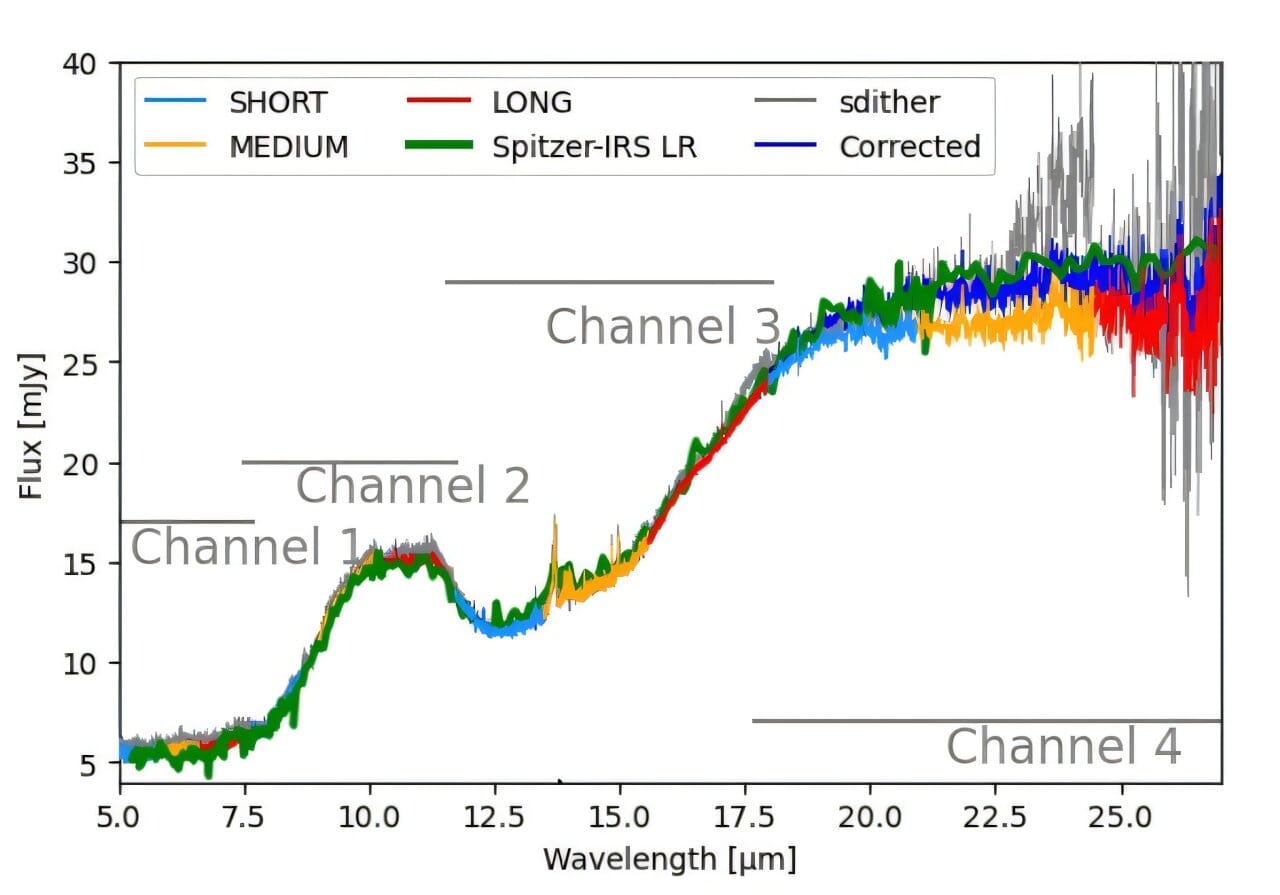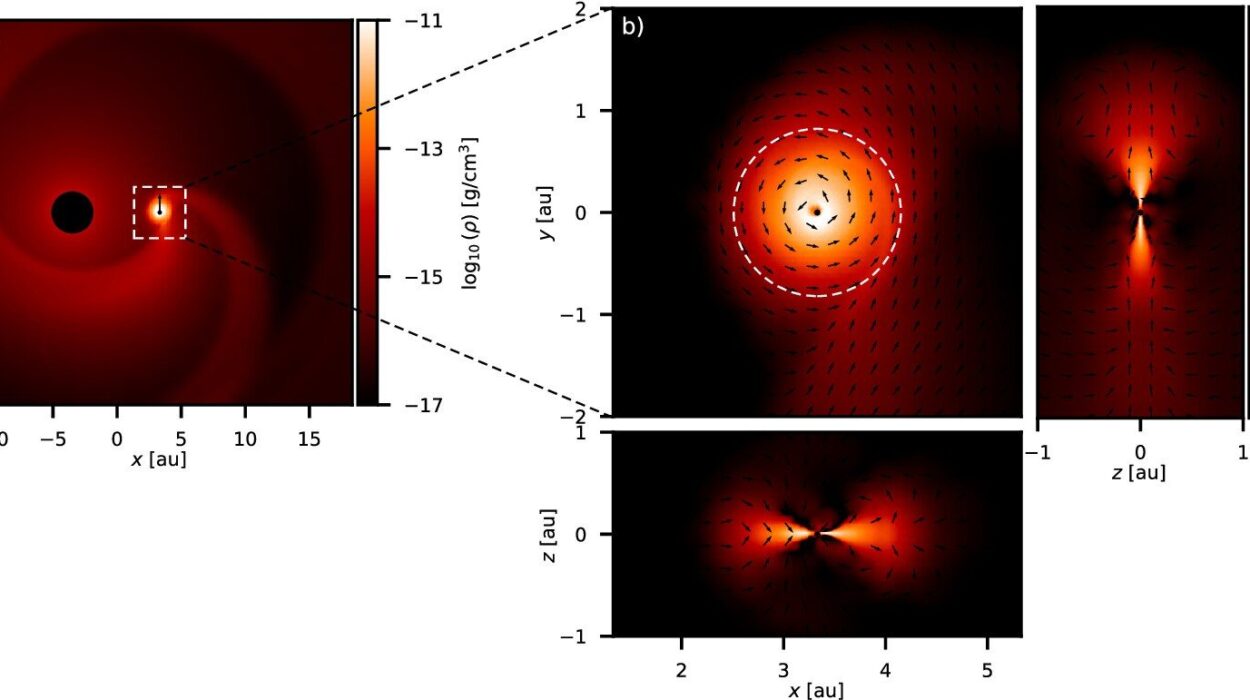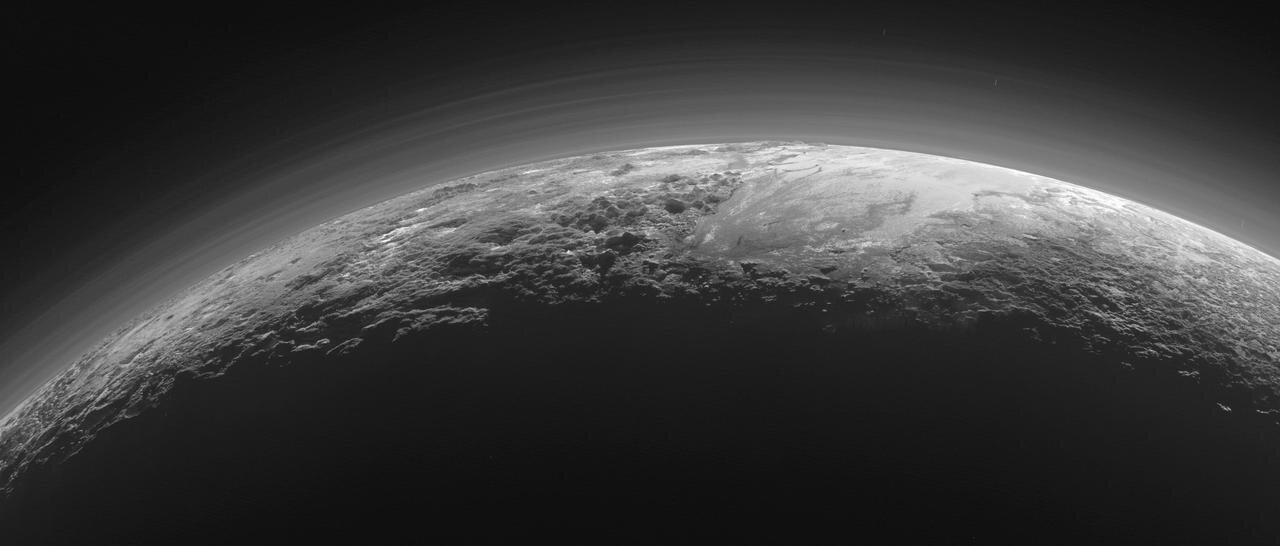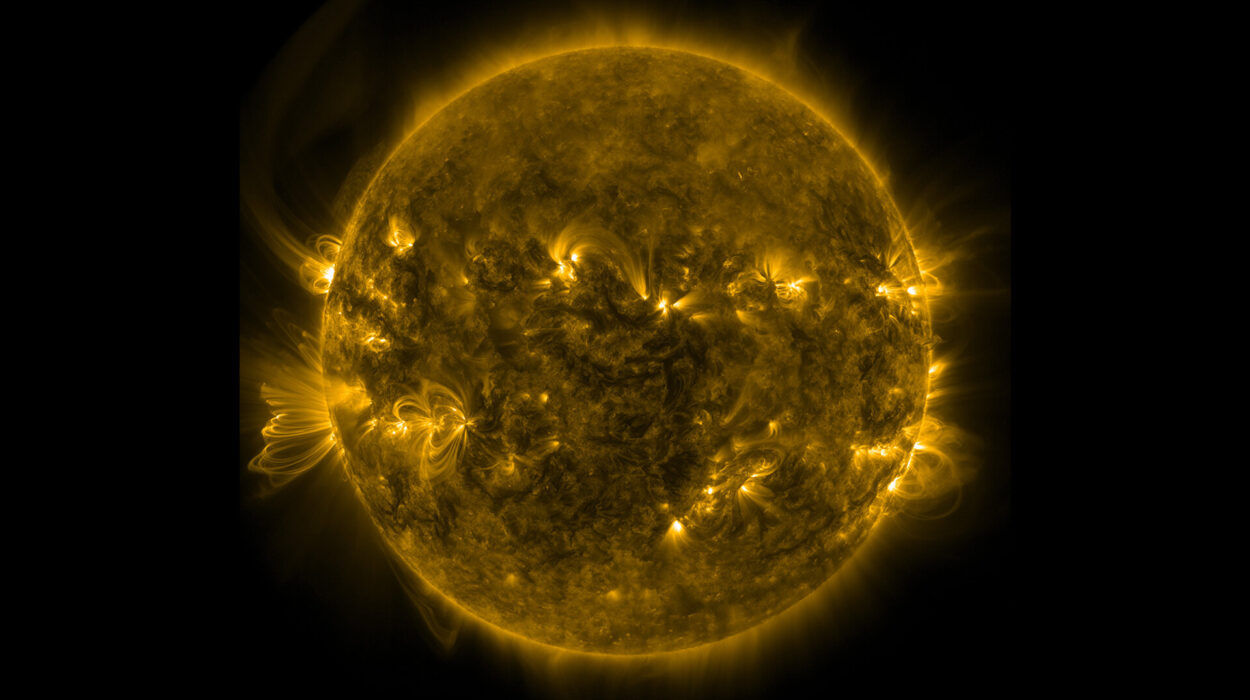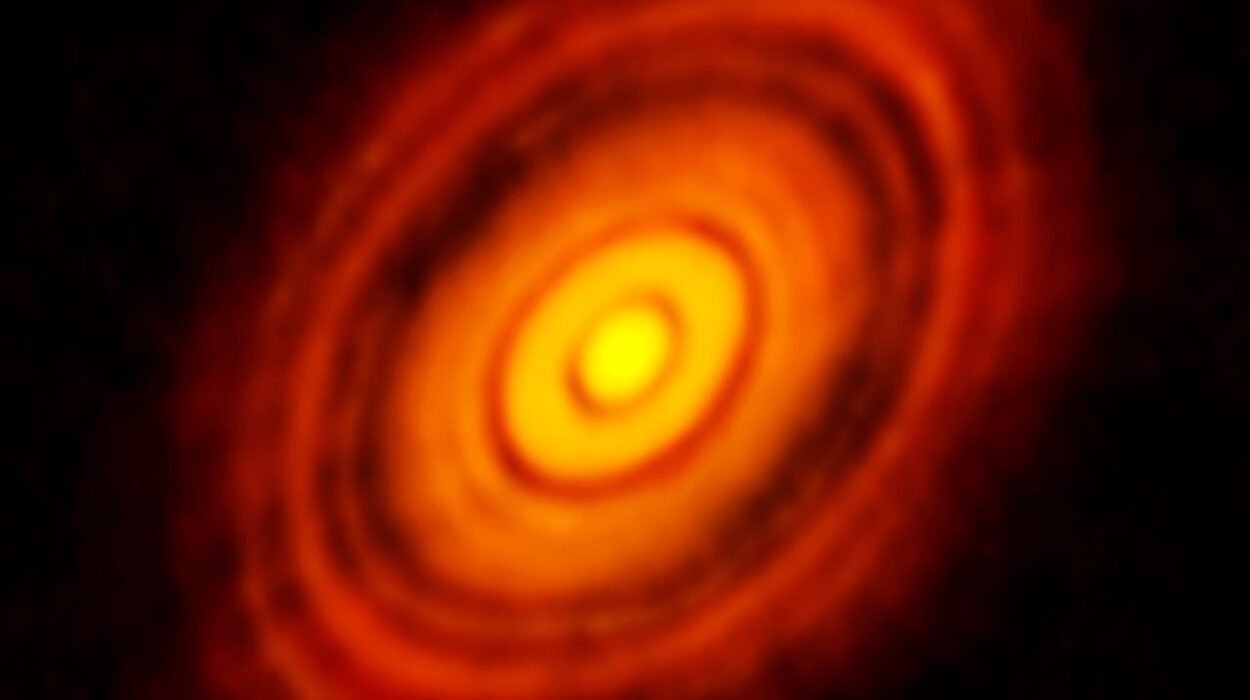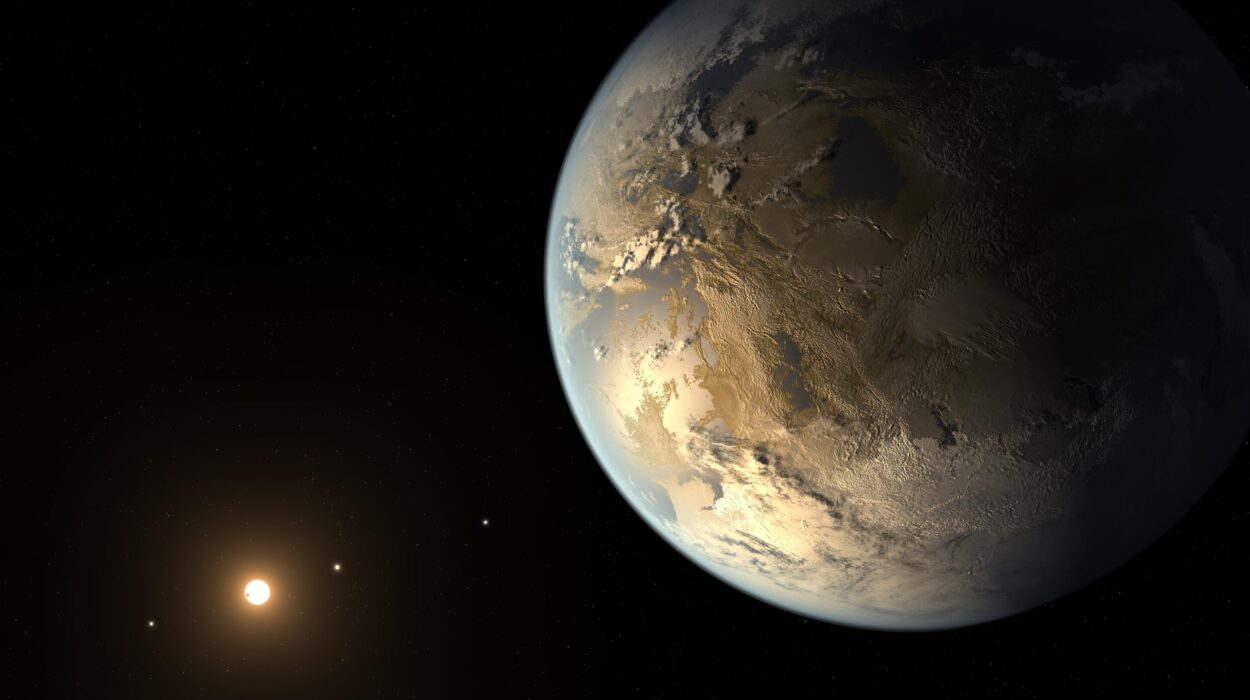Astronomers have taken a close look at one of the smallest and youngest star-like objects in our galactic neighborhood — and discovered that it’s surrounded by a surprisingly complex, carbon-rich disk. Using the James Webb Space Telescope (JWST), a team led by María Morales-Calderón of the Spanish Astrobiology Center has found that the brown dwarf Cha Hα 1 harbors an abundance of hydrocarbons and warm water, offering an intriguing glimpse into how planetary systems might form around such substellar bodies.
The findings, published on August 7 on the pre-print server arXiv, reveal that this small, dim object — barely massive enough to ignite limited nuclear reactions — hosts the most chemically diverse protoplanetary disk ever seen around a brown dwarf.
What Exactly Is a Brown Dwarf?
Brown dwarfs are cosmic middleweights: too massive to be planets, yet not quite massive enough to sustain the hydrogen fusion that powers stars. They typically range from about 13 to 80 times the mass of Jupiter, bridging the gap between giant planets and small stars. Instead of glowing steadily like true stars, brown dwarfs shine faintly, their light slowly fading as they cool over millions of years.
Many young brown dwarfs are found with swirling disks of gas and dust — the raw materials from which planets, moons, and other bodies can emerge. These protoplanetary disks are key to understanding how planetary systems form. Yet because brown dwarfs are faint and small, the detailed chemistry of their disks has remained largely mysterious.
Meet Cha Hα 1: A Young Neighbor in the Making
Cha Hα 1, formally known as Chamaeleon Hα 1, is a youthful brown dwarf located about 625 light-years away in the Chamaeleon I South star-forming region. It belongs to spectral type M7.5, with a relatively cool surface temperature of 2,805 Kelvin — far cooler than the Sun’s blistering 5,778 K.
Its mass lies between 0.04 and 0.05 solar masses, making it roughly 40 to 50 times the mass of Jupiter. Astronomers estimate it to be just 1.4 to 2.4 million years old — a mere infant in cosmic terms. Previous studies suggested that Cha Hα 1 was surrounded by a thick, flared protoplanetary disk, but its chemical makeup was largely unknown until now.
Peering Into the Disk with Webb’s Infrared Vision
To unlock the secrets of Cha Hα 1’s disk, Morales-Calderón’s team turned to JWST’s Mid-Infrared Instrument (MIRI). This powerful camera and spectrograph is uniquely capable of probing warm, dense regions of protoplanetary disks — the same regions where small, rocky planets might take shape.
MIRI’s infrared sensitivity allowed the researchers to detect faint molecular fingerprints in the disk’s inner zones, mapping out its chemical inventory with remarkable precision.
A Rich Cocktail of Hydrocarbons and Water
What they found astonished them. The disk contains at least 12 different carbon-bearing molecules, including familiar compounds like methane and ethylene, as well as more exotic ones such as diacetylene, benzene, and acetylene.
Warm water vapor was also present, along with carbon dioxide, molecular hydrogen, and hydrogen cyanide. Notably absent, however, were carbon monoxide and hydroxyl radicals — a chemical gap that could offer clues about the disk’s evolutionary state.
The hydrocarbons appear to share a common origin, forming in a reservoir with temperatures between 225 and 450 Kelvin (roughly -48°C to 177°C). The presence of large, 4-micron-sized amorphous silicate dust grains suggests that grain growth — a key step toward forming planets — began around 1.5 million years ago.
A Disk in Transition
The researchers believe Cha Hα 1’s disk is caught in a pivotal stage of its life. In its earliest phases, such disks tend to be water-rich. Over time, the chemistry can shift toward a higher carbon-to-oxygen ratio, favoring hydrocarbons. Cha Hα 1 appears to be somewhere in the middle of that journey.
This transitional stage makes it an especially valuable laboratory for testing models of planet formation. As the team writes:
“The rich molecular environment presents a unique opportunity to test our understanding of disk chemistry and its influence on potential planet formation. Gaining insight into the reservoirs of the detected molecules can further illuminate the composition of future planets forming around brown dwarfs.”
Why This Matters for Planetary Science
While brown dwarfs are smaller and dimmer than stars like our Sun, their disks can still form planets — perhaps even rocky worlds. If hydrocarbons and water coexist in these early environments, it could mean that the basic ingredients for life are more widespread in the universe than previously thought.
Moreover, the diversity of molecules seen around Cha Hα 1 rivals — and in some ways exceeds — that found in young Sun-like star systems. This challenges the notion that complex organic chemistry is limited to brighter, more massive stellar nurseries.
The Webb Era of Discovery
The Cha Hα 1 discovery is a reminder of just how transformative the James Webb Space Telescope has become for astronomy. By peering deep into dusty regions that would be invisible to optical telescopes, Webb is revealing not just the shapes and sizes of protoplanetary disks, but their chemical soul.
For Cha Hα 1, that soul is a swirling, warm, carbon-rich blend — a cosmic recipe that could, under the right conditions, one day bake a new kind of planet into existence.
And somewhere out there, perhaps around a faint brown dwarf in another corner of the galaxy, a similar recipe might already be cooking up something extraordinary.
More information: María Morales-Calderón et al, MINDS. Cha Hα 1, a brown dwarf with a hydrocarbon-rich disk, arXiv (2025). DOI: 10.48550/arxiv.2508.05155
